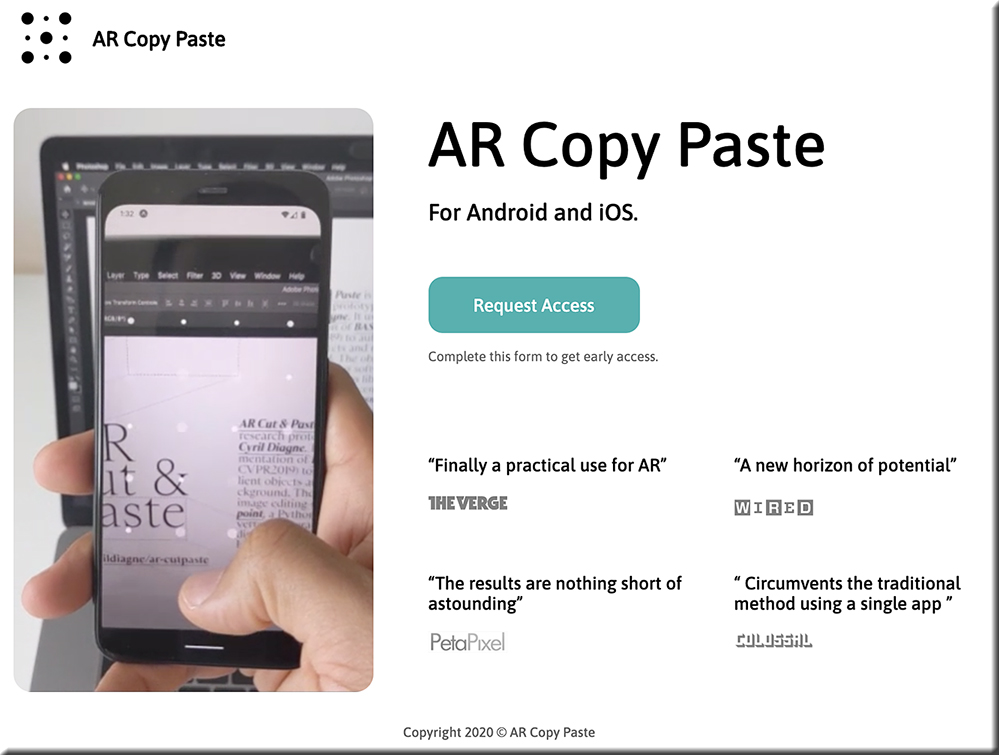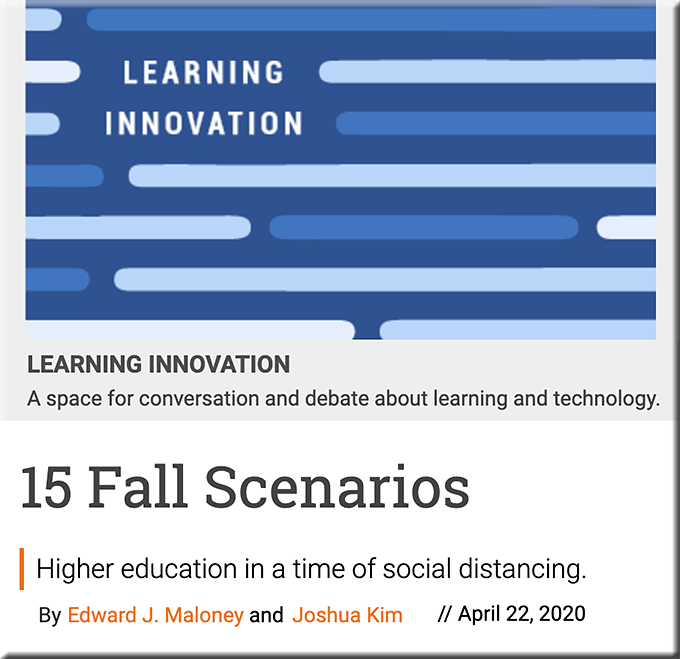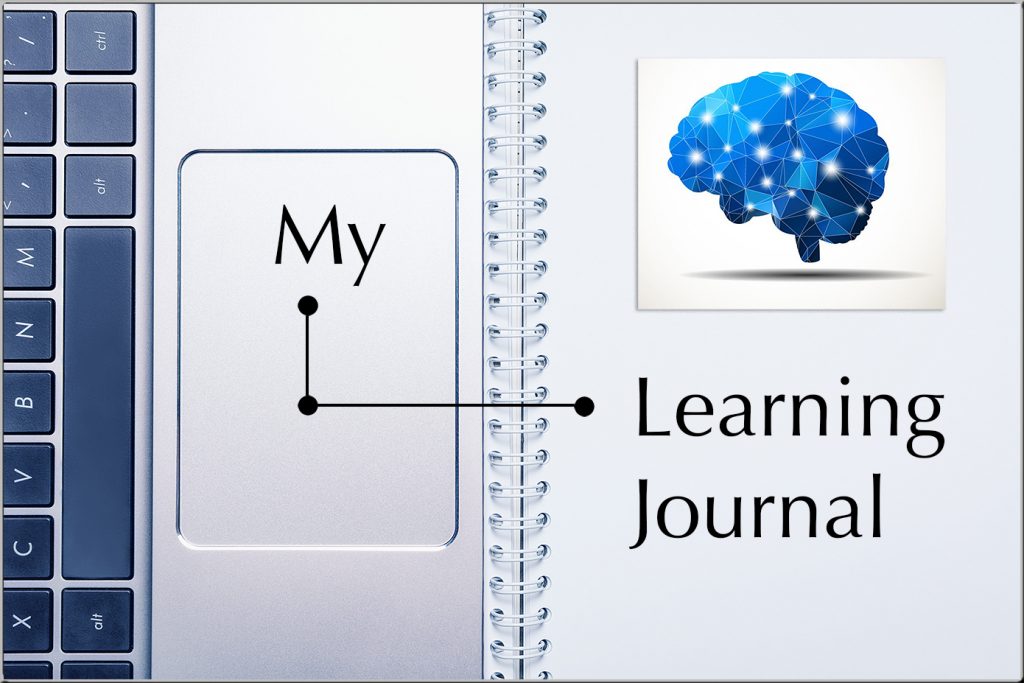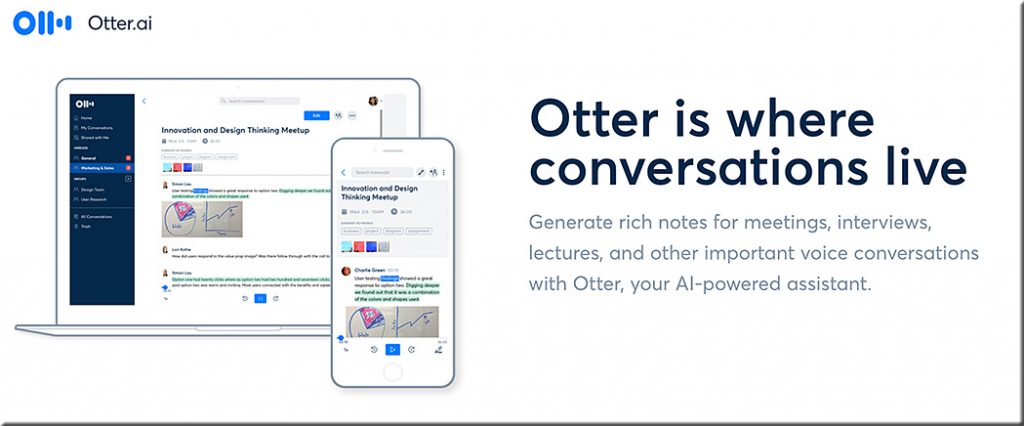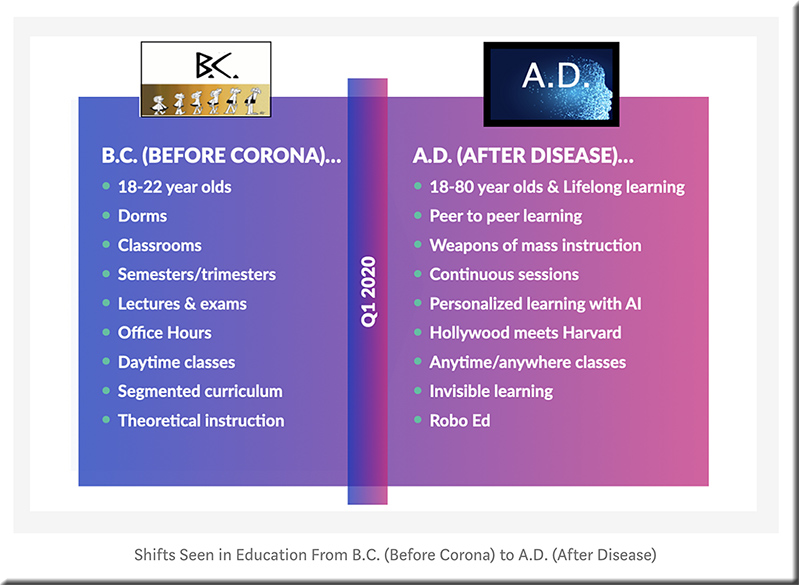From DSC:
I, for one, am glad that we made the investments in the telecommunications and networking infrastructures, in the PCs, Macs, laptops, tablets, other items in the #edtech realm, as well as investing in a variety of technologies through the years. Given the need to move online due to the Coronavirus, I’d say such investments offered many a solid ROI throughout K-12, higher education, as well as in the corporate world. But I realize that not everyone has access to these things…which is something we must work on as a nation.
But had we not made those investments, where we would be now?
Also see:
Teaching during COVID-19: Why We’re Fortunate — from er.educause.edu by Gardner Campbell
Not in the Future—Now — from er.educause.edu by John O’Brien
Excerpts:
…technology can no longer be seen as a utility working quietly in the background. Now more than ever, technology is a strategic asset that is vital to the success of every higher education institution.
…
Digital transformation (Dx) can no longer be considered an aspirational concept. It must be understood as an imperative. And that well-worn, precious notion of campus technology professionals doing work that is noticed only when there is an outage? This too is a thing of the past.
…
[Technology] is not just a lifeline that got us through a tricky situation. It is and must increasingly be understood as an integral, strategic part of the successful college or university. Not in the future. Now.










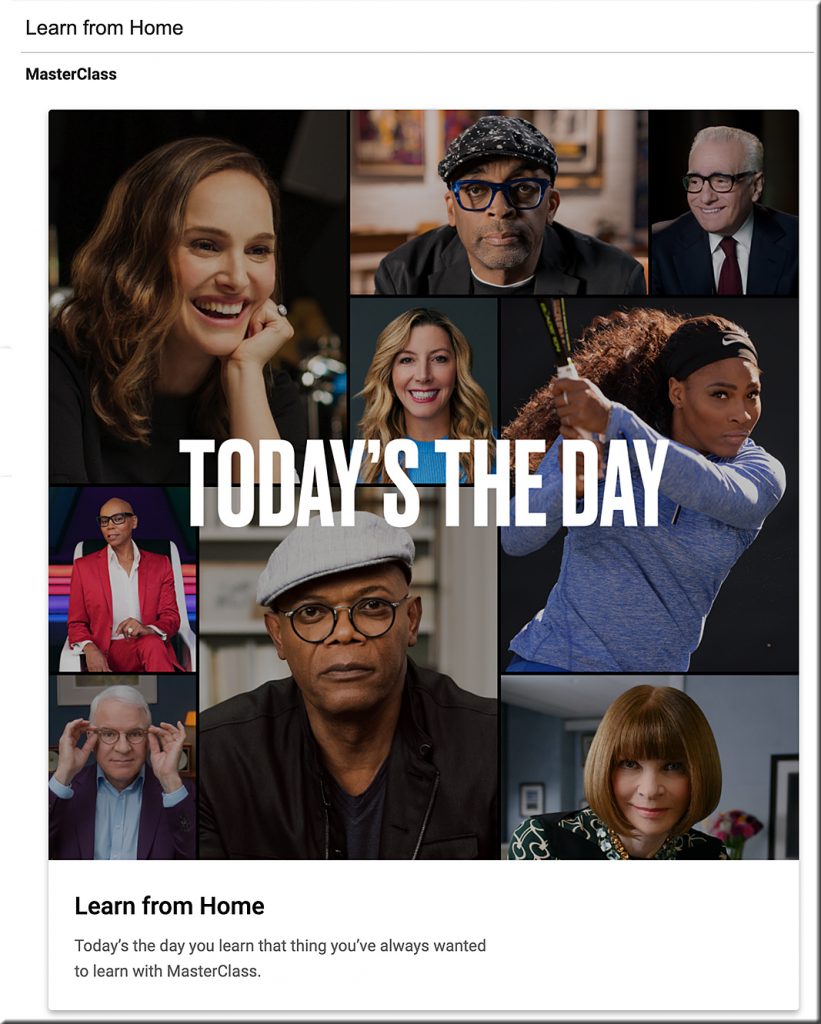
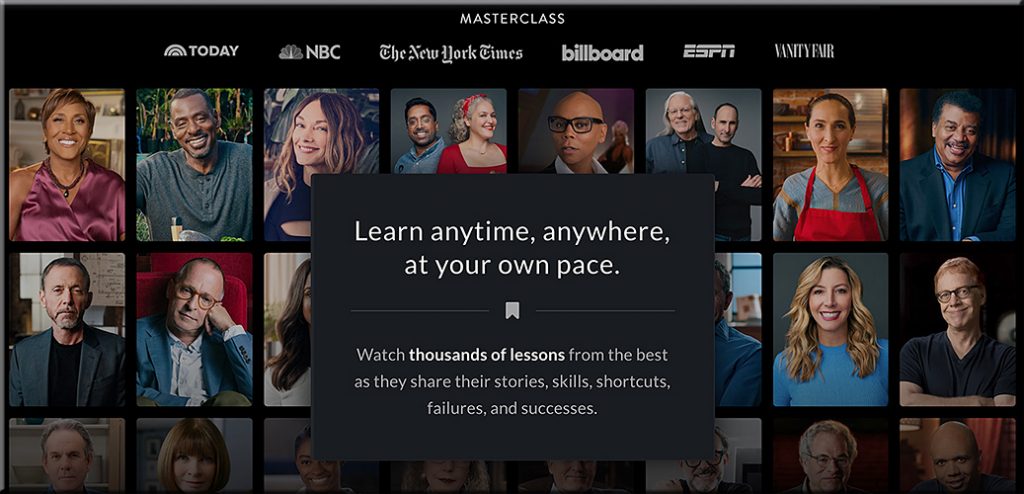




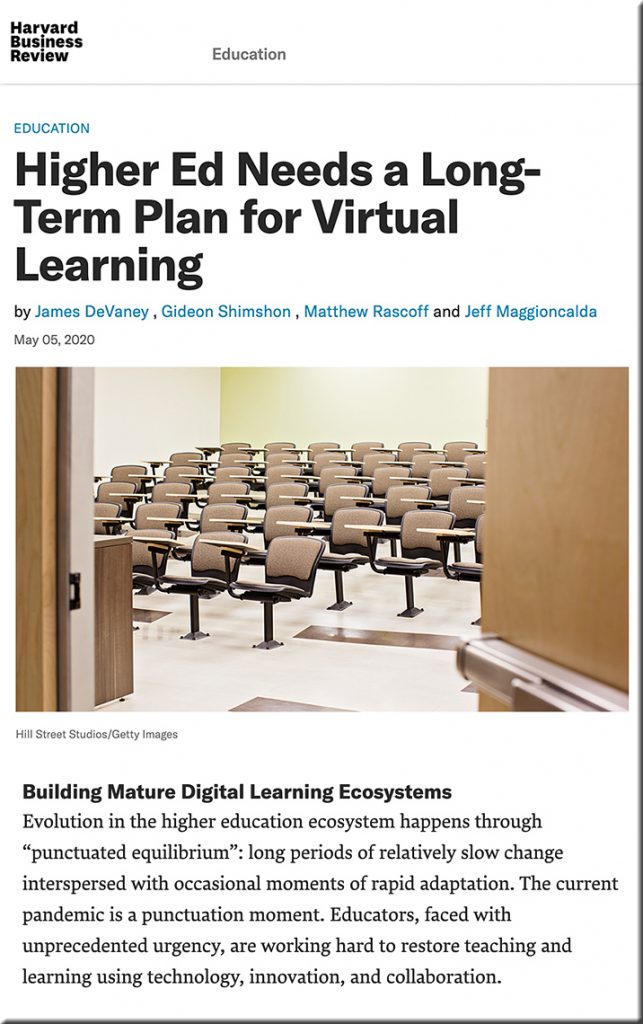

![ABA President Judy Perry Martinez on the ABA and the Profession in a Pandemic [Ambrogi]](http://danielschristian.com/learning-ecosystems/wp-content/uploads/2020/05/LawSites-5-18-20-Ambrogi-Martinez.jpg)
